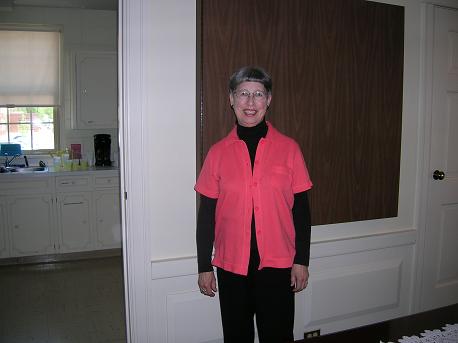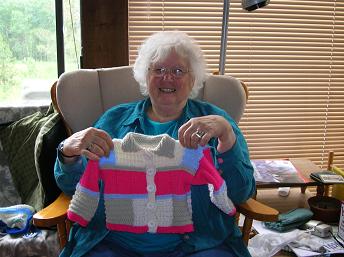This past week Don and I attended a funeral1. As we sat there, I couldn’t help thinking about how funerals have changed over the years. It used to be that everything seemed designed2 to be very mournful3. Everyone dressed in black, there was a long, solemn4 sermon5, and the music was of a sad type. The funeral we attended last week was quite different and was typical of change. Instead of black dresses or suits. most women had on6 their spring clothes in bright colors, pastels7 etc. That included the family of the deceased8.
Mart, the person whose funeral we attended, was 95 years old when he died. He was always known for his quick sense of humor9 and his love of good music. Consequently10, his family wanted his funeral to be a celebration11 of his life and not mournful. There was no sermon. Instead, one son and two grandsons spoke about what he had meant to them as they were growing up, and there was humor in the things they recounted12. The organ music13 was some of Bach’s best14 and was of a celebratory nature15. We all felt uplifted16 by it. The church choir17 also sang, his request, as he had been a member of it for many years. He had a beautiful voice and loved to sing. His grandson told of how he was singing in the hospital the morning he died. We all left the funeral feeling the service had been a true celebration of Mart’s life. I never felt that way when I went to funerals when I was younger.
Yesterday the college choir gave its spring concert18. It was at the church too because of the good organ there. At one point the choir director said that they were dedicating19 the next song to Mart, who had been a member of the choir when he was in college over 70 years ago. After the concert several of us told the director20 how glad we were that he had done that. He said he did it for several reasons, the most important being that he thinks that young people these days need to remember that they are a part of something that has had continuity21 for a very long time. I heartily22 agreed.
Notes:
1. funeral: a ceremony or observance held for a person who has just died, usually before burial or cremation (葬礼).
2. designed: planned and prepared.
3. mournful: very sad
4. solemn: serious, somber or gloomy in tone (严肃、庄重的).
5. sermon: a religious speech delivered in public as part of a religious service (讲道).
6. had on: 穿着,“have a piece of clothing on” or “have on a piece of clothing” 表示 “wear a piece of clothing”.
7. pastels: light, soft colors such as pink, pale yellow, light blue, etc. (浅颜色)
8. deceased: a particular person (or particular people) who has/have recently died (死者).
9. sense of humor: a personality trait or ability to find things amusing rather than being serious all the time (幽默感).
10. consequently: as a result of something or some action (结果).
11. celebration: an occasion for festive or joyful observance in honor of something or somebody (庆祝).
12. recounted: tell or describe (讲述)
13. organ music: melodic sounds produced by a large instrument known as a pipe organ (管风琴音乐). Most large churches in Europe and the U.S. have pipe organs which are played for church services, funerals, or other occasions.
14. Bach’s best: the best of the music composed by Johann Sebastian Bach (约翰. 塞巴司蒂安.巴赫所谱写的音乐中最好的). He lived in Germany (1685-1750). He was a composer and musician. Some consider his music the best ever written for the organ.
15. of a celebratory nature: festive or joyful in nature (具有欢庆特点的)
16. felt uplifted: felt very cheerful and happy (感到精神振奋).
17. church choir: a vocal group of persons in a church who regularly sing at services in the church (教堂唱诗班).
18. spring concert: a performance given in spring by a musical group (春季音乐会).
19. dedicating: performing in honor of somebody or something (把……奉献给……).
20. director:(乐队)指挥
21. continuity: uninterrupted existence (连续性、连续不断存在)
22. heartily: 发自内心地








 Our friend, Todd Onken, is a retired smokejumper
Our friend, Todd Onken, is a retired smokejumper pipes in this way. Sometimes all of the pipes are hidden behind a screen
pipes in this way. Sometimes all of the pipes are hidden behind a screen take organ lessons during the summer. The church was one mile (1.6 kilometers) from our home on a farm at the edge of our
take organ lessons during the summer. The church was one mile (1.6 kilometers) from our home on a farm at the edge of our  To the left is a photo of a modern organ that was built in Iowa by Dobson Pipe Organ Builders, Ltd. It is located in Grand Rapids, Michigan. You can see the large pipes at the front of the organ case
To the left is a photo of a modern organ that was built in Iowa by Dobson Pipe Organ Builders, Ltd. It is located in Grand Rapids, Michigan. You can see the large pipes at the front of the organ case
